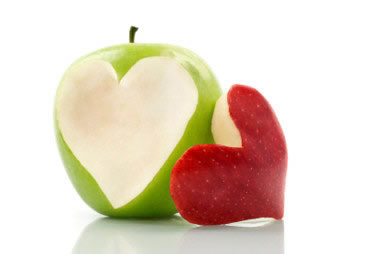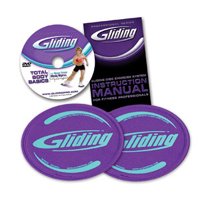Single leg exercises to improve core strength and balance
Come get soem balance on KUSI Good Morning SD News 9 am on Wednesdays!!
Bunnies in the studio losing their ears and their balance!!! LOL
Hoppin Fun!!!
hugs and hops
| Looking for ways to kick start your heart-healthy lifestyle? Start by looking at your diet. Poor food choices can have a negative effect on your heart, weight and overall health; but making small, sustainable changes to improve your diet can have a lasting impact. There is a lot of misinformation about what foods are or aren't heart-healthy, so it may surprise you to learn that you don't need exotic fruits, imported nuts, or even pricey supplements to take care of your ticker. By making heart smart choices at home, at the grocery and at your favorite restaurant, you can reduce your risk of heart disease. DO focus on fruits and vegetables. Most American's don't come close to eating the recommended minimum of 5 servings per day, but vegetables and fruits of all kinds and colors should take center stage in a heart-healthy diet. They're rich in fiber, vitamins, minerals and antioxidants that promote a healthy heart and body, plus they're filling and low in calories, which can promote weight management. Fresh, frozen, dried, canned (without sugar/syrups or added salt), raw, cooked—all fruits and vegetables are good for you. Here are more tips to fit them into your meals and snacks. DON'T overdo it on juice and processed "fruit" snacks. The fruit filling in a breakfast pastry is mostly sugar—not a real serving of fruit. And while small amounts of 100% fruit juice can fit into a healthy diet, they're also concentrated sources of sugar (naturally occurring) and calories compared to whole fruits, which also boast heart-healthy fiber while juice does not. Find out how juice can fit into a healthy diet. DO monitor your sodium intake. Sodium gets a bad rap—and deservedly so. Our bodies do need this mineral, but in much smaller quantities than we normally eat. To prevent high blood pressure and heart disease, a healthy sodium goal to strive for is no more than 1,500 milligrams per day. Keep in mind that sodium doesn't just come from the salt shaker; processed foods, frozen entrees, canned vegetables, common condiments (like ketchup), deli meats (such as salami) and cheeses (including cottage cheese) can be high in sodium, as can many restaurant dishes. Learn how sodium sneaks into your diet and ways to reduce your intake. DON'T forget about added sugar. Most people know that sugar isn't exactly a health food. It provides quick-digesting carbohydrates, but no real nutrition (think: vitamins and minerals). While many people associate sugar with the development of diabetes, few people realize that sugar plays just as much of a role in heart disease as dietary fat does. One study published in the Journal of the American Medical Association found that individuals who ate more sugar had lower levels of HDL "good" cholesterol and higher triglycerides—markers of increased heart disease risk. The American Heart Association recommends that women consume no more than 6 teaspoons of added sugars (about 100 calories) each day; that number becomes 9 teaspoons for men (150 calories). Just one 12-ounce can of cola has about 130 calories, or eight teaspoons of sugar. Learn more about where sugar lurks in your diet. DO cut back on fat. To reduce your risk of heart disease you need to choose the right types of fat, and make sure that you're not eating too much fat in general. Most adults eat too much fat, regardless of the source, so cutting back on dietary fat is a good first step to a heart healthy diet. That's why choosing low-fat products, baking or broiling instead of frying, and reducing or omitting the fats that recipes call for (think: oil, shortening, lard) are important first steps to get your fat intake in line. Avoid fats that elevate your cholesterol levels: trans fats(hydrogenated oils found in baked goods and many margarines) and saturated fats (usually found in high-fat meats and dairy products, including beef, lamb, pork, poultry, beef fat, cream, lard, butter, cheese and dairy products made with whole or 2% milk, as well as baked goods and fried foods that contain palm oil, palm kernel oil and coconut oil). About 25-35% of your total calories for the day should come from fat sources. For someone eating 1,500 calories per day, that's about 41-58 grams of fat. SparkPeople's meal plans and nutrition rangesmeet this guideline, so if you track your food and are within your daily fat goal, you are meeting this recommendation. DON'T fear all fats. Not all fats are bad for you. In fact, certain types of fat, such as monounsaturated fat andOmega-3s, actually promote heart health. Once you've gotten your fat intake in line, focus on making heart-smart fat choices to meet your daily recommendations. Fats found in nuts, olive, soybean and canola oils, fish and seafood. DO imbibe in moderation (if you drink). Research indicates that a moderate alcohol intake has been associated with a decreased risk for certain cardiovascular diseases, particularly coronary heart disease. A moderate alcohol intake is defined as up to 1 drink per day for women and up to 2 drinks per day for men. To find out if a moderate alcohol intake is appropriate for you, talk to your doctor about your consumption of alcohol, medical history, and any medications you use. Learn more about alcohol and your heart. DON'T start drinking alcohol if you aren't already a drinker. There are other, healthier ways to reduce your risk of heart disease rather than drinking alcohol, which also comes with its own set of risks and can lead to problems. If you don't drink now, don't start. Other healthy habits (like not smoking, eating right, getting regular exercise and maintaining a healthy weight) can also help you reduce your risk of heart disease. DO fill up on fiber. A high fiber diet can help reduce the risk of heart disease. Certain types of fiber may help lower LDL "bad" cholesterol. Adults should aim for 20-30 grams each day. To meet your daily quota, select a variety of unprocessed plant-based foods each day, including whole grains, (oats, whole-wheat bread/flour/cereal fruits and vegetables and beans. DON'T forget about cholesterol. Cholesterol is a waxy fat-like substance made in the liver and cells of animals. It is therefore found in animal products (meat, poultry, dairy and eggs), but not plant-sourced foods. A high intake of dietary cholesterol can contribute to heart disease. For the prevention of heart disease, limit your intake of dietary cholesterol to less than 300 milligrams each day. If you already have an elevated LDL cholesterol level or you are taking a cholesterol medication, this goal is even lower: 200 milligrams daily. While it may seem like there are a lot of "rules" to follow to protect your heart, it all boils down to making smart choices on a consistent basis. Focus on the foods that you know are good for you—whole grains, fruits and vegetables, low-fat dairy products, lean protein choices, and healthy fats—and limit or avoid the types of foods that don't do anything for your health (think empty calories, fried foods, sugar and sweets, and high-fat meats and dairy products). When you focus on the good stuff and make healthful choices most of the time, you'll be doing your body—and your heart—well. |




 1. Resistance band (or tube) $15 This is by far the most versatile piece of equipment you can buy. I've long
1. Resistance band (or tube) $15 This is by far the most versatile piece of equipment you can buy. I've long  4. Pedometer $15-$20 Studies show that when people wear a pedometer, they tend to take more steps throughout the day. A
4. Pedometer $15-$20 Studies show that when people wear a pedometer, they tend to take more steps throughout the day. A  5. Gliding discs $20 You may have seen these discs at the gym or on TV. They are a fun way to add new exercises to your strength training repertoire, and most discs come with a pamphlet with instructions and exercise ideas. Of course, you'll need more than gliding discs alone to get in shape, but if you're looking for something new that doesn't break the bank, they can be a fun option. You can also you paper plates as a free substitute for commercial discs.
5. Gliding discs $20 You may have seen these discs at the gym or on TV. They are a fun way to add new exercises to your strength training repertoire, and most discs come with a pamphlet with instructions and exercise ideas. Of course, you'll need more than gliding discs alone to get in shape, but if you're looking for something new that doesn't break the bank, they can be a fun option. You can also you paper plates as a free substitute for commercial discs. 7. Stability ball $15-$20 Like resistance bands, stability balls (also called physio, Swiss or
7. Stability ball $15-$20 Like resistance bands, stability balls (also called physio, Swiss or  12.
12.  18. Mini ball $10-$13 You may have seen infomercials for the "Bender Ball," but these mini fitness balls have been used among instructors and trainers for years. If you're an intermediate to advanced exerciser, you can probably discover countless ways to incorporate this ball into your strength training routines. If not, you can buy the Bender Ball and accompanying abs DVD for under $13.
18. Mini ball $10-$13 You may have seen infomercials for the "Bender Ball," but these mini fitness balls have been used among instructors and trainers for years. If you're an intermediate to advanced exerciser, you can probably discover countless ways to incorporate this ball into your strength training routines. If not, you can buy the Bender Ball and accompanying abs DVD for under $13. 24. Balance trainer $15-$25 There are a lot of balance trainers out there, from balance boards to bubble-shaped discs, which can improve core strength and add intensity to your standard strength training moves. Some smaller, inexpensive models are available, and these can add variety, challenge and fun to your routine.
24. Balance trainer $15-$25 There are a lot of balance trainers out there, from balance boards to bubble-shaped discs, which can improve core strength and add intensity to your standard strength training moves. Some smaller, inexpensive models are available, and these can add variety, challenge and fun to your routine.


